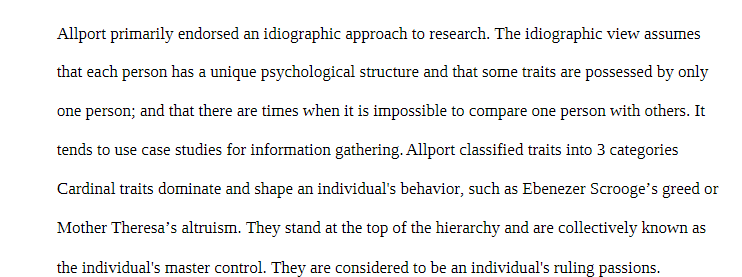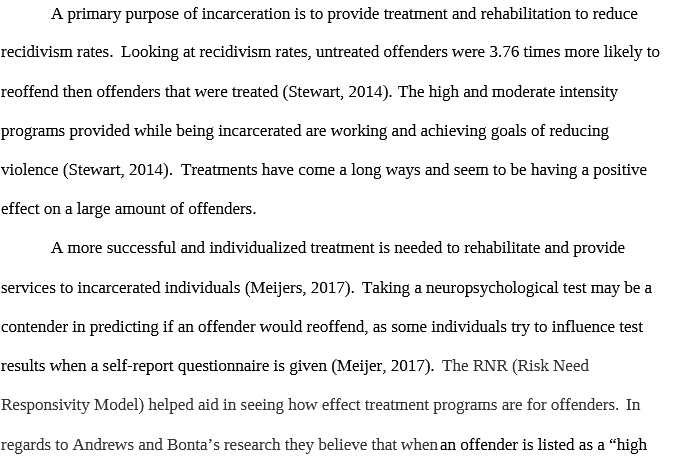Discussion 3 PSY216 PSY-216 – Snhu
$4.99$16.99
Discussion 3 PSY216 PSY-216 – Snhu
Allport primarily endorsed an idiographic approach to research. The idiographic view assumes that each person has a unique psychological structure and that some traits are possessed by only one person; and that there are times when it is impossible to compare one person with others. It tends to use case studies for information gathering. Allport classified traits into 3 categoriesCardinal traits that dominate and shape an individual’s behavior, such as Ebenezer Scrooge’s greed or Mother Theresa’s altruism. They stand at the top of the hierarchy and are collectively known as the individual’s master control. They are considered to be an individual’s ruling passions. Cardinal traits are powerful, but few people have personalities dominated by a single trait. Instead, our personalities are typically composed of multiple traits. Central traits come next in the hierarchy.
Description
Discussion 3 PSY216 PSY-216 – Snhu
Allport primarily endorsed an idiographic approach to research. The idiographic view assumes that each person has a unique psychological structure and that some traits are possessed by only one person; and that there are times when it is impossible to compare one person with others. It tends to use case studies for information gathering. Allport classified traits into 3 categoriesCardinal traits that dominate and shape an individual’s behavior, such as Ebenezer Scrooge’s greed or Mother Theresa’s altruism. They stand at the top of the hierarchy and are collectively known as the individual’s master control.
Discussion 3 PSY216 PSY-216 – Snhu
They are considered to be an individual’s ruling passions. Cardinal traits are powerful, but few people have personalities dominated by a single trait. Instead, our personalities are typically composed of multiple traits. Central traits come next in the hierarchy. These are general characteristics found in varying degrees in every person (such as loyalty, kindness, agreeableness, friendliness, sneakiness, wildness, or grouchiness). They are the basic building blocks that shape most of our behavior.
Discussion 3 PSY216 PSY-216 – Snhu
Secondary traits exist at the bottom of the hierarchy and are not quite as obvious or consistent as central traits. They are plentiful but are only present under specific circumstances; they include things like preferences and attitudes. These secondary traits explain why a person may at times exhibit behaviors that seem incongruent with their usual behaviors. For example, a friendly person gets angry when people try to tickle him; another is not an anxious person but always feels nervous. Allport analyzed not only stable traits but also motivational processes(Marieb, 2014). He emphasized the functional autonomy of human motives.
Discussion 3 PSY216 PSY-216 – Snhu
- PSY 211 – Lifespan Development (5015 Documents),
- PSY 215 – Abnormal Psychology (4335 Documents),
- PSY 108 – Introduction to Psychology (3759 Documents),
- PSY 223 – Statistics for Psychology Research (2652 Documents),
- PSY 216 – Psychology of Personality (1841 Documents),
- PSY 510 – Research Methods (1748 Documents),
- PSY 520 – Research Methods in Psychology II (1469 Documents),
- PSY 257 – Psychology (1451 Documents),
- PSY 310 – Criminal Psychology (1393 Documents),
- PSY 200 – FOUNDATIONS OF ADDICTIONS (1379 Documents),
Only logged in customers who have purchased this product may leave a review.







Reviews
There are no reviews yet.